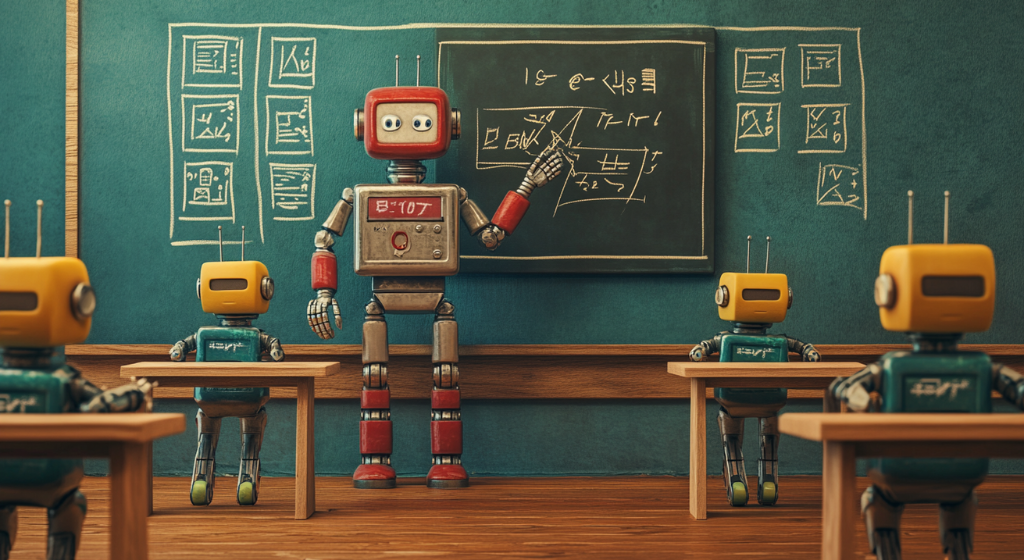
The “Estimate, Extrapolate, and Situate” (EES) algorithm, developed by MIT’s CSAIL and The AI Institute, was recently presented at the Robotics: Science and Systems conference. It enables robots to assess their surroundings, evaluate their proficiency in specific tasks like sweeping, and autonomously initiate practice sessions to improve their performance when needed. (Source: Image by RR)
MIT’s EES Algorithm Innovation Lets Robots Learn and Adapt Independently
Researchers have developed a groundbreaking algorithm called “Estimate, Extrapolate, and Situate” (EES), which enables robots to autonomously identify their skill weaknesses and systematically practice to improve them, much like assigning themselves homework. Created by MIT’s Computer Science and Artificial Intelligence Lab (CSAIL) and The AI Institute, the EES algorithm was recently showcased at the Robotics: Science and Systems conference. The process begins with the robot using its vision system to evaluate its environment and tasks, such as cleaning a room, before the algorithm estimates the robot’s current ability to perform specific actions. If the algorithm detects a skill gap that could enhance overall performance, it initiates focused practice sessions to address it.
The researchers tested EES on Boston Dynamics’ Spot quadruped robot, which has previously demonstrated proficiency in various tasks, particularly when equipped with an arm attachment. However, with EES, Spot worked more efficiently by honing its skills through targeted practice. For example, the robot learned to securely place a ball and ring on a slanted table within three hours and improved its ability to sweep toys into a bin after just two hours. These results, as reported in techspot.com, significantly outpaced previous frameworks, which would have required over 10 hours for Spot to achieve similar proficiency in these tasks.
Although the tasks tested were relatively simple, the researchers believe this technology could eventually lead to robots that can enhance their performance in various environments, including factories, coffee shops, households, and hospitals. Future goals for the EES algorithm include integrating simulators to combine virtual and physical practice sessions, potentially accelerating the learning process, and developing algorithms capable of reasoning over sequences of practice attempts rather than focusing solely on isolated skills.
Researchers are optimistic about the potential of the EES algorithm to revolutionize the way robots learn and perform tasks in real-world environments. By integrating EES technology, robots could one day autonomously enhance their performance across a variety of settings, including factories, coffee shops, households, and even hospitals. The ultimate goal is to create robots capable of learning on the job, adjusting to new challenges, and mastering complex sequences of tasks without human intervention. The team also envisions future enhancements, such as integrating advanced simulators that allow robots to combine virtual practice with physical sessions. This could drastically reduce learning times and further increase efficiency. Moreover, the development of algorithms that can reason over sequences of practice attempts, rather than isolated skills, could lead to even more versatile and capable robots. As these technologies advance, the line between human and robot capabilities may blur, opening up a new era of intelligent machines capable of independent learning and adaptation.
read more at techspot.com







Leave A Comment